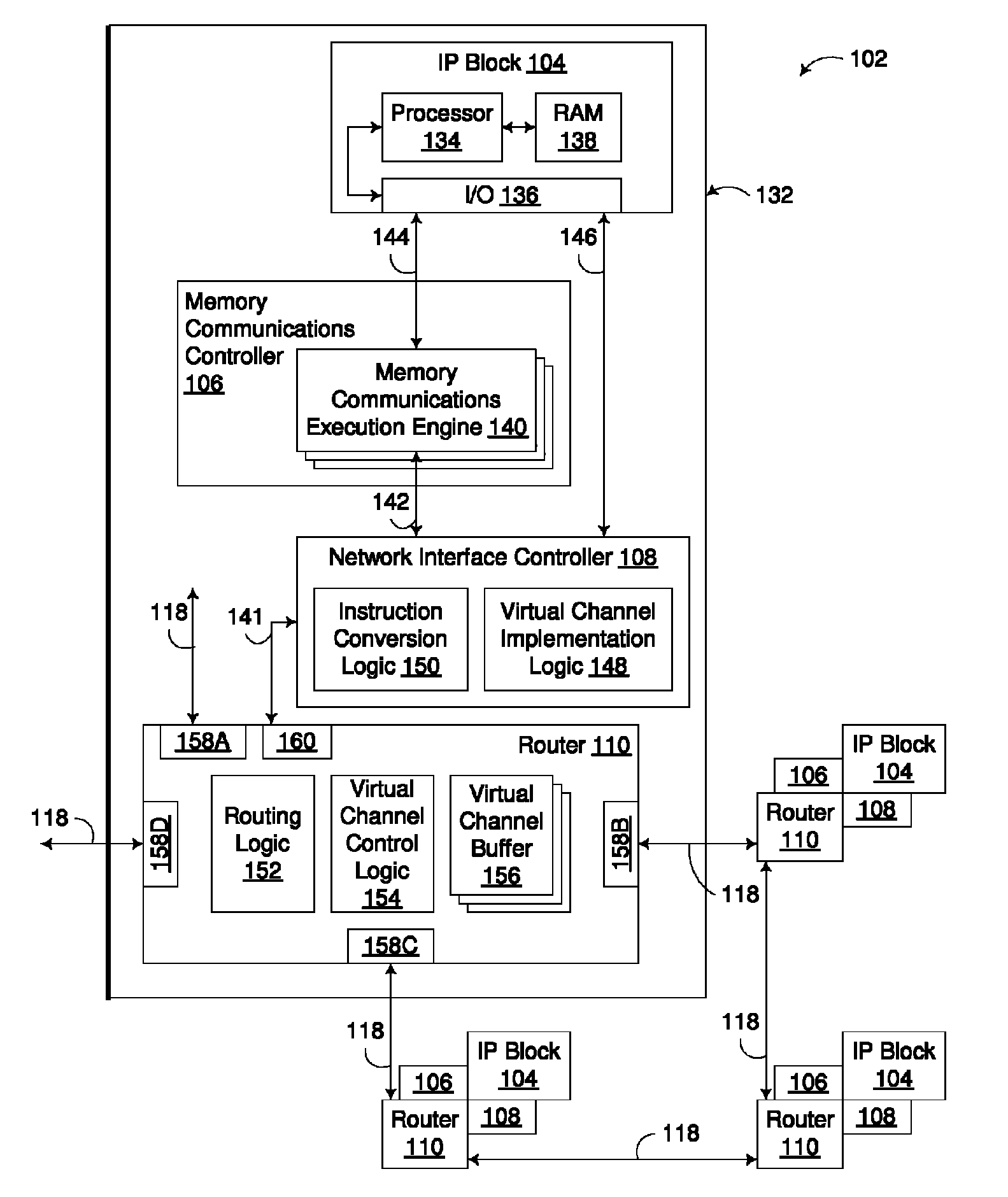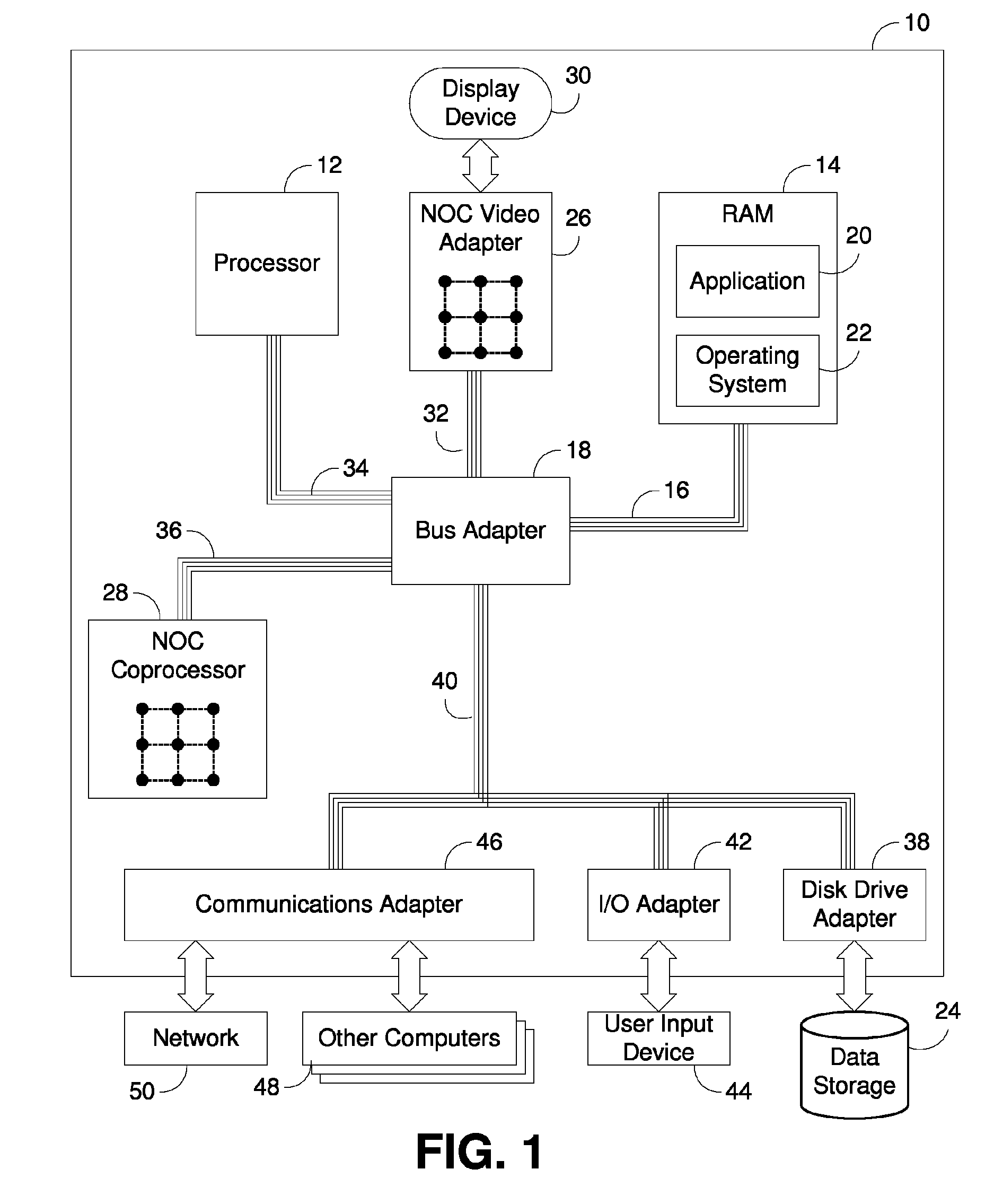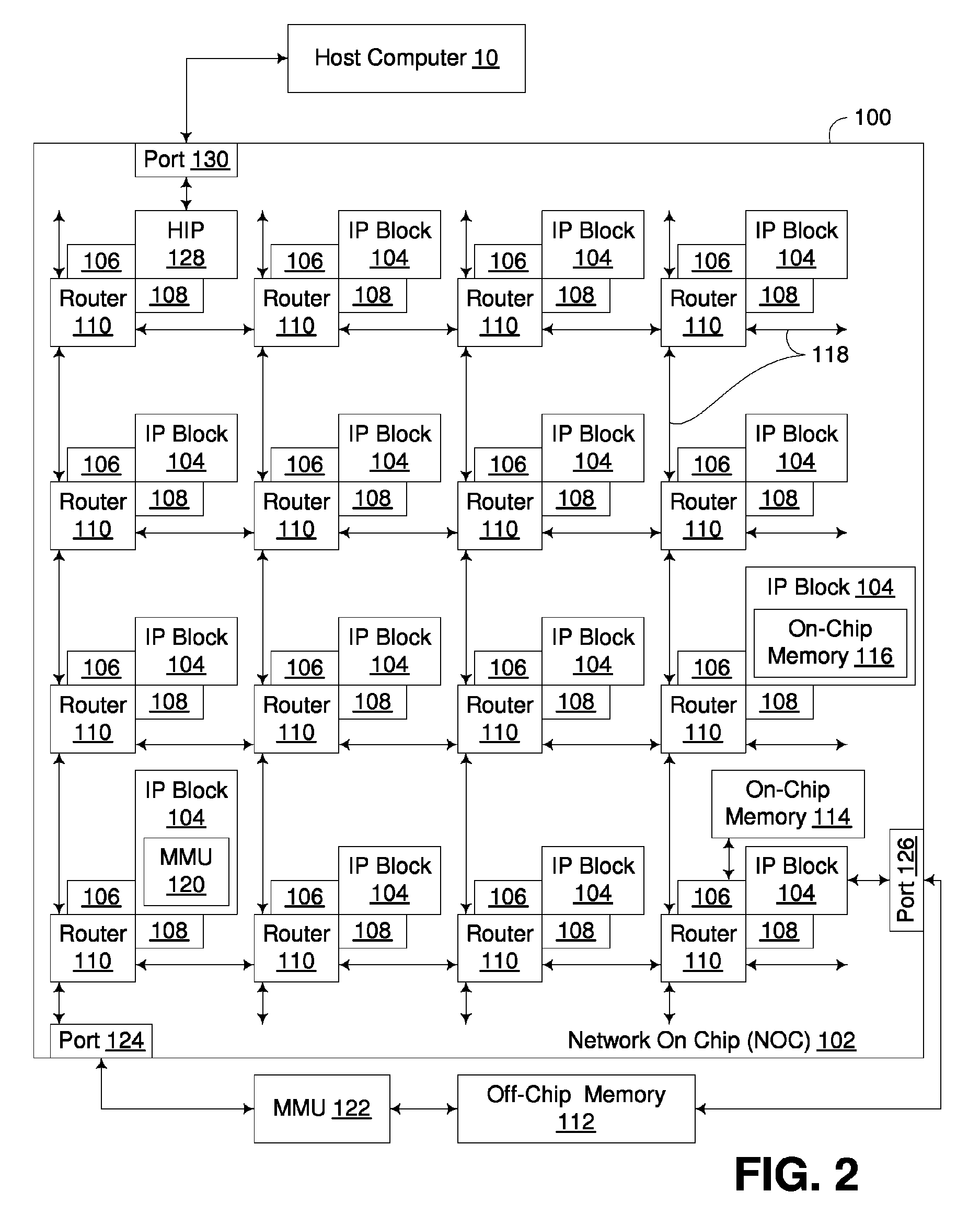Image processing with highly threaded texture fragment generation
a texture fragment and image processing technology, applied in the field of data processing, can solve the problems of low amount of computational power, rasterization suffers from several drawbacks, and modern monitors display images, so as to improve overall hardware utilization and performance, and improve flexibility. the effect of performan
- Summary
- Abstract
- Description
- Claims
- Application Information
AI Technical Summary
Benefits of technology
Problems solved by technology
Method used
Image
Examples
Embodiment Construction
[0029]Embodiments consistent with the invention utilize a multithreaded rendering architecture capable of dynamically routing pixel fragments from a pixel fragment generator to any pixel shader from among a pool of pixel shaders. Routing logic is disposed in one or more pixel fragment generators, e.g., a raster-based pixel fragment generator such as a rasterizer, or a physical-based fragment generator such as may be used in ray tracing or photon mapping, or alternatively disposed intermediate a pixel fragment generator and the pool of pixel shaders, or elsewhere in the rendering architecture, in order to dynamically select pixel shaders in which to process pixel fragment data sets output by each pixel fragment generator.
[0030]A pixel fragment data set includes data characterizing at least a fragment of one pixel in a rendered image. Depending upon the pixel fragment generator, pixel data may be output for only a fragment of one pixel, for one pixel, or for a group of pixels, and it ...
PUM
 Login to View More
Login to View More Abstract
Description
Claims
Application Information
 Login to View More
Login to View More - R&D
- Intellectual Property
- Life Sciences
- Materials
- Tech Scout
- Unparalleled Data Quality
- Higher Quality Content
- 60% Fewer Hallucinations
Browse by: Latest US Patents, China's latest patents, Technical Efficacy Thesaurus, Application Domain, Technology Topic, Popular Technical Reports.
© 2025 PatSnap. All rights reserved.Legal|Privacy policy|Modern Slavery Act Transparency Statement|Sitemap|About US| Contact US: help@patsnap.com



